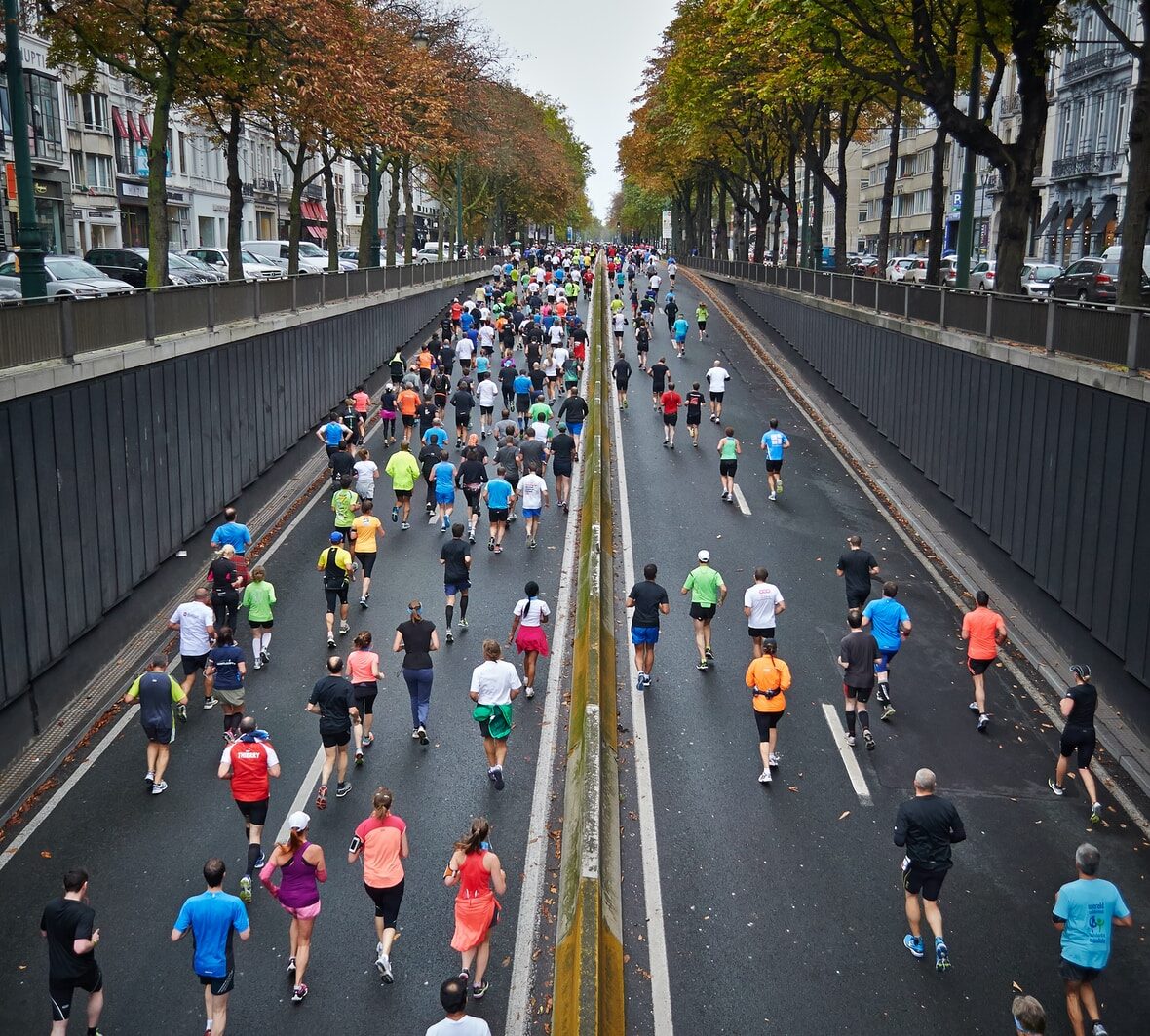Walking is more than just a way to get from one place to another—it’s a powerful tool that can transform a student’s life in unexpected ways. Imagine a simple activity that can boost brain power, reduce stress, and even save the planet. Intrigued? You’re not alone. Many students and educators are discovering the hidden benefits of walking, and the results are nothing short of remarkable.
Picture this: a group of students walking to school, chatting and laughing, their minds sharp and ready for the day ahead. This isn’t just a scene from a feel-good movie; it’s a reality for those who embrace walking as part of their daily routine. From improving academic performance to fostering friendships, walking is the secret weapon every student needs in their arsenal. Ready to take the first step? Let’s dive into the surprising benefits of walking for students and how you can make it a part of your life.
Key Takeaways
- Boosts Brain Power: Walking increases blood flow to the brain, enhancing cognitive function and academic performance.
- Reduces Stress: A natural mood enhancer, walking releases endorphins that help alleviate stress and anxiety.
- Fosters Social Connections: Walking with peers provides opportunities for communication and relationship building.
- Eco-Friendly Choice: Walking reduces carbon emissions, promoting a sustainable lifestyle.
- Accessible and Low-Cost: Requires minimal gear—just a pair of comfortable shoes.
👉 Shop Walking Gear on:
- Nike Walking Shoes: Amazon | Nike Official Website
- Adidas Walking Shoes: Amazon | Adidas Official Website
Walking is not just an activity; it’s a lifestyle choice that can lead to a healthier, happier, and more connected life. So, lace up those shoes and start your journey today!
Table of Contents
- ⚡️ Quick Tips and Facts
- 🚶♂️ The Evolution of Walking: From Cavemen to Classrooms
- 🌟 Why Walking is a Student’s Secret Weapon
- 1. Boosting Brain Power: The Cognitive Benefits of Walking
- 2. Stress Buster: Walking as a Mental Health Ally
- 3. Social Strolls: Building Friendships One Step at a Time
- 4. Physical Fitness: Walking Towards a Healthier You
- 5. Eco-Friendly Commute: Walking to Save the Planet
- 👟 Step Up Your Game: Essential Walking Gear for Students
- 📅 Making Walking a Daily Habit
- 🔍 Safety First: Walking Tips for Students
- 🎒 Walking to School: A Parent’s Guide
- 🌍 Global Perspectives: Walking in Different Cultures
- 🧠 Quick Tips for Teachers: Incorporating Walking into Lessons
- 💡 Conclusion: The Last Word on Walking
- 🔗 Recommended Links
- ❓ FAQ
- 📚 Reference Links
⚡️ Quick Tips and Facts
Welcome to the world of walking, where every step counts! Here are some quick tips and facts to get you started:
- Walking boosts brain function 🧠: Regular walking increases blood flow to the brain, enhancing cognitive performance. Source.
- Stress reduction ✅: Walking releases endorphins, which help reduce stress and anxiety. Source.
- Social engagement: Walking with friends or family can strengthen relationships and make exercise more enjoyable.
- Eco-friendly 🌍: Walking reduces your carbon footprint, making it a sustainable choice for the planet.
- No special gear required: Just a pair of comfortable shoes, and you’re good to go!
For more creative ideas on how to incorporate walking into school activities, check out our article on 15 Creative School Walk-a-Thon Ideas to Inspire Fun! 🎉.
🚶♂️ The Evolution of Walking: From Cavemen to Classrooms
Walking has been humanity’s primary mode of transportation since the dawn of time. From the days of cavemen roaming the earth to students striding through school corridors, walking has evolved but remains a constant in our lives. It’s not just about getting from point A to B; it’s about the journey, the sights, and the benefits along the way.
The Historical Significance of Walking
- Ancient Times: Walking was essential for survival, hunting, and gathering.
- Middle Ages: Pilgrimages and trade routes made walking a cultural and economic necessity.
- Modern Era: With the advent of cars and public transport, walking became a choice rather than a necessity.
🌟 Why Walking is a Student’s Secret Weapon
Walking is like a secret weapon in a student’s arsenal, offering a myriad of benefits that go beyond physical health. Let’s dive into why every student should embrace walking.
Academic Advantages
- Improved Concentration: Walking before school can boost alertness and readiness to learn. Source.
- Enhanced Memory: Regular walking has been linked to better memory retention and learning capabilities.
Emotional and Social Benefits
- Mood Booster: Walking releases feel-good hormones, improving mood and reducing feelings of depression.
- Social Interaction: Walking with peers fosters communication and builds friendships.
1. Boosting Brain Power: The Cognitive Benefits of Walking
Walking is not just a physical activity; it’s a brain booster! Here’s how it sharpens the mind:
Cognitive Enhancements
- Increased Blood Flow: Walking increases circulation, delivering more oxygen and nutrients to the brain.
- Neurogenesis: Regular walking stimulates the growth of new brain cells, particularly in the hippocampus, which is crucial for memory.
Academic Performance
- Focus and Attention: Students who walk regularly report better focus in class and improved academic performance.
2. Stress Buster: Walking as a Mental Health Ally
Feeling stressed? Take a walk! Walking is a natural stress reliever, and here’s why:
Mental Health Benefits
- Endorphin Release: Walking triggers the release of endorphins, the body’s natural mood lifters.
- Mindfulness: Walking allows time for reflection and mindfulness, reducing anxiety and stress levels.
Personal Story
One of our team members, Sarah, shares how walking helped her cope with exam stress during college. “Every morning, I’d walk around the campus, and it was my time to clear my head and prepare for the day.”
3. Social Strolls: Building Friendships One Step at a Time
Walking is not just a solitary activity; it’s a social one too! Here’s how walking can help students build and strengthen friendships.
Social Benefits
- Group Walks: Encourage students to walk in groups, fostering communication and teamwork.
- Walking Clubs: Schools can organize walking clubs to promote social interaction and physical activity.
4. Physical Fitness: Walking Towards a Healthier You
Walking is a simple yet effective way to improve physical fitness. Here’s how it benefits students:
Fitness Benefits
- Cardiovascular Health: Regular walking strengthens the heart and improves circulation.
- Weight Management: Walking helps burn calories and maintain a healthy weight.
Comparison Table: Walking vs. Other Exercises
| Activity | Calories Burned (30 mins) | Equipment Needed | Social Aspect |
|---|---|---|---|
| Walking | 150 | None | High |
| Running | 300 | Shoes | Medium |
| Cycling | 250 | Bike | Low |
5. Eco-Friendly Commute: Walking to Save the Planet
Walking is not just good for you; it’s good for the planet too! Here’s why walking is an eco-friendly choice:
Environmental Impact
- Reduced Emissions: Walking reduces reliance on cars, cutting down on greenhouse gas emissions.
- Sustainable Transport: Walking is a sustainable mode of transport that requires no fuel or infrastructure.
👟 Step Up Your Game: Essential Walking Gear for Students
While walking doesn’t require much, having the right gear can enhance the experience. Here’s what students need:
Essential Gear
- Comfortable Footwear: Brands like Nike and Adidas offer great options for walking shoes. Shop Nike on Amazon.
- Weather-Appropriate Clothing: Dress in layers to adjust to changing weather conditions.
- Water Bottle: Staying hydrated is key during walks.
📅 Making Walking a Daily Habit
Consistency is key! Here’s how students can make walking a part of their daily routine:
Habit Formation
- Set a Schedule: Encourage students to walk at the same time each day, like before school or during lunch breaks.
- Track Progress: Use apps like Strava or Fitbit to track steps and set goals.
🔍 Safety First: Walking Tips for Students
Safety is paramount when walking. Here are some tips to ensure students stay safe:
Safety Tips
- Use Sidewalks: Always walk on sidewalks or designated walking paths.
- Stay Visible: Wear bright or reflective clothing, especially in low-light conditions.
- Be Aware: Stay alert and avoid distractions like phones or headphones.
🎒 Walking to School: A Parent’s Guide
Walking to school is a fantastic way for students to get exercise. Here’s a guide for parents:
Tips for Parents
- Plan the Route: Choose the safest route with sidewalks and crosswalks.
- Buddy System: Encourage students to walk with a friend or in groups for added safety.
🌍 Global Perspectives: Walking in Different Cultures
Walking is a universal activity, but its significance varies across cultures. Here’s a glimpse into how different cultures embrace walking:
Cultural Insights
- Japan: Walking is a daily activity, with many people commuting on foot or by public transport.
- Europe: Cities like Amsterdam and Copenhagen are designed for pedestrians, promoting walking as a primary mode of transport.
🧠 Quick Tips for Teachers: Incorporating Walking into Lessons
Teachers can incorporate walking into their lessons to enhance learning. Here’s how:
Classroom Strategies
- Walking Discussions: Take the class outside for walking discussions or brainstorming sessions.
- Nature Walks: Use nature walks to teach subjects like biology or geography.
Stay tuned for the Conclusion where we wrap up the wonders of walking and provide you with some final thoughts and recommendations!
💡 Conclusion: The Last Word on Walking

Walking is the unsung hero of student life. It’s a simple, accessible, and highly effective way to boost physical health, enhance mental well-being, and foster social connections. Whether it’s a brisk walk to school, a leisurely stroll with friends, or a purposeful stride to clear the mind, walking offers a treasure trove of benefits that every student should tap into.
Positives:
- Cognitive Boost: Enhances memory and concentration.
- Stress Relief: Reduces anxiety and promotes mental well-being.
- Social Benefits: Encourages interaction and builds friendships.
- Eco-Friendly: Reduces carbon footprint and promotes sustainability.
Negatives:
- Weather Dependent: Inclement weather can deter walking.
- Safety Concerns: Requires awareness of surroundings and safe routes.
Recommendation: Embrace walking as a daily habit. It’s a low-cost, high-reward activity that can transform a student’s life in myriad ways. Equip yourself with comfortable shoes and a positive mindset, and you’re all set to stride towards a healthier, happier you!
🔗 Recommended Links
👉 Shop Walking Gear on:
- Nike Walking Shoes: Amazon | Nike Official Website
- Adidas Walking Shoes: Amazon | Adidas Official Website
- Books on Walking Benefits: Amazon
❓ FAQ

What are the benefits of regular walking for children’s physical health and development?
Walking regularly helps children develop strong bones, maintain a healthy weight, and improve cardiovascular fitness. It’s a low-impact exercise that promotes endurance and muscle strength without the risk of injury associated with more intense activities. Learn more about health benefits.
Read more about “Can Participating in a Walkathon Boost Students’ Teamwork & Social Skills? 🚶♀️ …”
How can walking impact a student’s mental health and wellbeing in a positive way?
Walking is a natural mood enhancer. It releases endorphins, reduces stress, and provides a break from academic pressures. Students who walk regularly often report feeling calmer and more focused, which contributes to overall well-being. Explore more mental health benefits.
Are there any correlations between walking and improved academic performance in students?
Yes, studies have shown that students who engage in regular physical activity, like walking, tend to have better concentration, improved memory, and higher academic performance. Walking increases blood flow to the brain, which enhances cognitive functions crucial for learning. Read more about cognitive benefits.
Can organizing school walkathons be an effective way to promote physical activity and community engagement among students?
Absolutely! School walkathons are a fantastic way to encourage physical activity while fostering a sense of community. They provide a fun, inclusive environment for students to engage in exercise, build friendships, and support school initiatives. Discover creative walkathon ideas.
📚 Reference Links
- The Benefits of Walking for Children – Novak Djokovic Foundation
- Harvard Health – Walking Your Way to Better Health
- Verywell Fit – How Walking Reduces Stress
- Better Health Channel – Walking for Good Health
- Hopkins Medicine – The Advantages of Walking to School
Walking is more than just a mode of transportation; it’s a lifestyle choice that can lead to a brighter, healthier future. So lace up those shoes and take the first step today!
